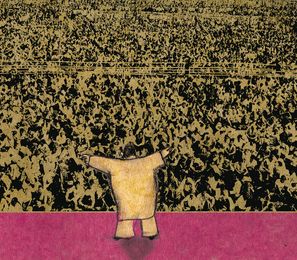January seems to be a cruel month for political parties in Bengal, especially in crowd management. Trinamool Congress supremo Mamata Banerjee held an impressive United India rally with leaders of 20 opposition parties at Kolkata’s sprawling Brigade Parade Ground. But “impressive” fails to meet the high standards set by Mamata herself, since she began her romance with the country’s largest maidan in 1992. With a capacity of 20 lakh when jam-packed, only former prime minister Indira Gandhi and long-time chief minister Jyoti Basu could fill the ground, after weeks of mobilisation work in all districts and even neighbouring states. The BJP, which had announced a mega rally of Narendra Modi at the Brigade Parade Ground, has wisely decided to shift it to Asansol in north Bengal. State party president Dilip Ghosh said he was unable to mobilise crowds as the statewide rath yatra had been stalled because the Mamata government denied permission.
Mamata announced her arrival as a politician of substance when she defied the Congress leadership and held a rally which spilled for a kilometre outside the ground. Five years later, she held another rally to announce the formation of the Trinamool Congress. Since Greater Kolkata was her favourite political region, she could get bigger and bigger crowds to emerge, first as the opposition leader and then as the ruler, after a thumping victory in 2011, followed by another in 2016. She had planned the United India rally as a launching pad for her undeclared prime ministerial ambitions.
The CPI(M), which has declined in popular support, now prefers smaller grounds for its rallies.
There are many venues across the country that are a big test for the magnetism of leaders and organisational muscle. Modi, as the BJP mascot since 2013, has tried to push his record in several venues like Patna’s massive Gandhi Maidan. He held a packed rally at the venue where the big crowd pullers have been Jayaprakash Narayan, Lalu Prasad and Nitish Kumar. Mumbai’s Shivaji Park, which is better known as the nursery of cricket legends, is another challenging venue, though much smaller than the ones in Kolkata and Patna. For the past 50 years, the Shiv Sena has packed the ground in South Mumbai, especially when party founder Bal Thackeray gave his fiery Vijaya Dashami speeches. Modi has preferred the newer BKC ground, which has a capacity similar to Shivaji Park.
In Delhi, the challenging venue used to be Boat Club lawns, flowing in a long but narrow path from Vijay Chowk to India Gate and beyond. It became the favourite rallying ground for parties opposed to the Congress prime ministers Indira and Rajiv Gandhi, as well as for farmer leaders like Devi Lal from Haryana and Mahendra Singh Tikait from Uttar Pradesh. But in 1993, when the BJP threatened a massive rally post the Ayodhya demolition, Prime Minister P.V. Narasimha Rao banned Boat Club as a political venue. Though there have been massive gatherings like the protest against the gang rape of a young woman in 2012, Boat Club is yet to see its glory days. The Delhi High Court has said the police cannot permanently ban rallies, but the Delhi Police have remained obdurate.
A venue that could match Brigade Ground was Chennai’s Marina Beach, which was filled by the Dravidian parties, bussing lakhs from the districts. In Bengaluru, the National College grounds had the reputation of having the largest capacity and the one who regularly got it packed was Atal Bihari Vajpayee, with whom Bangalore South had a long political love affair. Now the open ground has shrunk as sports arenas have been built.
sachi@theweek.in


